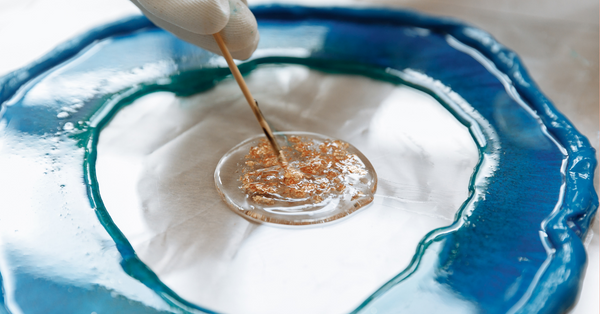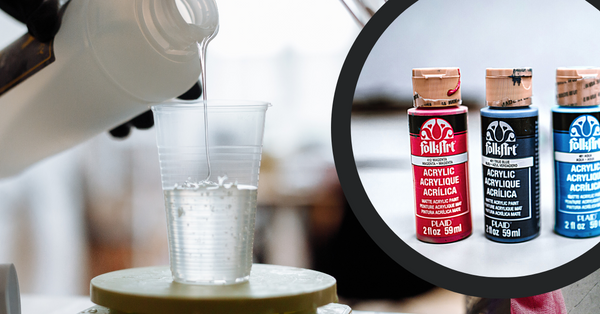
Adding glitter to resin can be an easy and inexpensive way to add a little pizzazz to your creations.
But can you use any glitter in resin?
The answer is – no! Not all glitters are suitable for use in resin. Some glitters contain particles that will break down in resin, causing the glitter to sink to the bottom or the colors to bleed into your project resulting in an uneven, cloudy finish.
Here are several things you should consider before incorporating glitter into your next resin art project.
TABLE OF CONTENTS
Challenges of Adding Glitter to Resin Art
Overall, incorporating glitter into resin art can be a great way to create individually beautiful pieces. However, it’s important to be aware of the potential challenges that come along with doing so.
By taking the necessary precautions and following the proper steps, you can ensure that your resin art will turn out beautifully with glitter added.

Here are some potential issues you may encounter (or have already!):
- Glitter can sink – If glitter is not properly mixed with the resin, it can settle to the bottom of the finished piece. This can be especially problematic if the resin is clear, as the glitter will be visible on the bottom of the piece. To avoid this issue, it’s important to make sure the glitter is thoroughly mixed with the resin before it is poured.
- Glitter can be difficult to remove – Once glitter is added to a piece of resin art, it can be difficult to remove it if you decide you don’t like the effect. In some cases, it may be necessary to sand down the piece to remove the glitter, which can damage the artwork.
- Color bleeding – Color bleeding occurs when a color from the glitter transfers onto the resin, causing an unwanted color shift. This can be extremely frustrating if you’re trying to create a specific color scheme or design. Fortunately, there are steps you can take to prevent color bleeding when adding glitter to resin, which will be discussed in detail below.
As you can see, working glitter into a resin-based project isn’t always easy; however, it is doable and can have a great effect on the final piece when done properly. Keep reading to learn how to avoid these issues and get the best results when working with glitter and resin.
Tips for the Best Glitter Resin
Before you start sprinkling glitter into your next resin project, consider the tips below to achieve optimal results, each and every time.
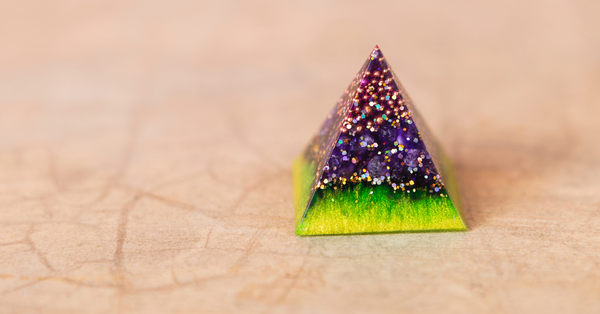
1. Use the Right Glitter
When adding glitter to resin, it’s important to choose the right type of glitter, paired with the right type of resin, for the job.
Generally speaking, the bigger or heavier the glitter particles, the more likely they will settle to the bottom of the resin. The thinner the resin is, the greater the chance of the glitter sinking.
Therefore, the key to keeping glitter afloat is to choose a glitter that is suitable for the viscosity of the resin.
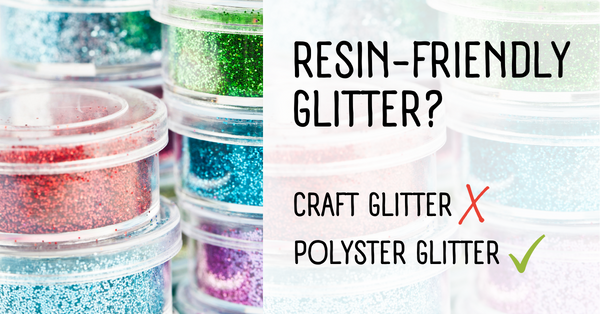
So…what’s the best glitter for resin?
There are a few types of glitter out there: craft glitter and polyester glitter. Some are suitable for resin, some aren’t.
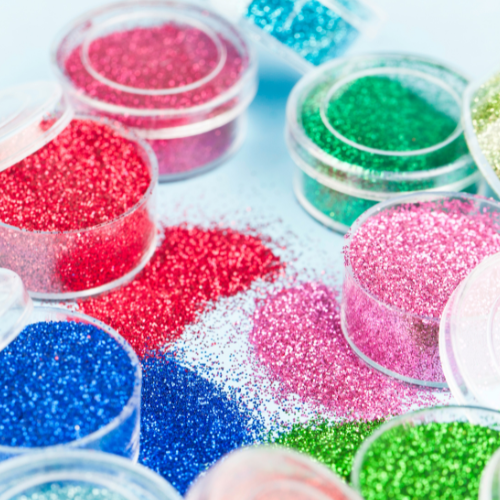
Craft glitter is the cheap glitter you find everywhere. While it’s affordable and readily available, most craft glitters contain particles that will break down when exposed to the chemicals in the resin. This can cause your resin project to have cloudy colors and an uneven finish, and your glitter will likely sink to the bottom of your piece.
Craft glitter typically isn’t UV resistant either, so it fades when exposed to UV light.
Polyester glitter is a high quality glitter that’s great for use with resin. It is non-toxic and resistant to UV damage. It won’t break down or cause any issues when used with resin, making it a safe and reliable option. Also, polyester glitters are often more vibrant than other types of glitter, giving you a more eye-catching finish for your project. The only downside is – they can be expensive!
You can also look for glitter designed to be used with epoxy resins. These glitters are often labeled as “epoxy friendly” and will provide the same benefits as polyester glitter while still being safe to use in resin projects.
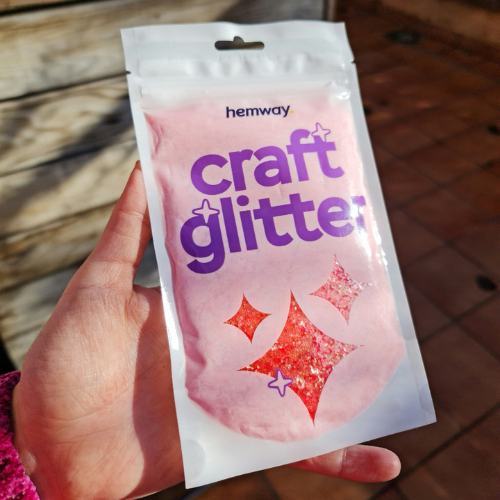
If you’re working on a small project and you want a top quality finish, Noddway Iridescent Fine Glitter is a great option. It’s a polyester glitter of extremely high quality. The downside is it is only sold in smaller amounts.
If you’re working on a larger project, Hemway Craft Glitter is middle of the road in terms of quality but offers a much better bang for your buck. It’s available in a ton of different colors, finishes and sizes. They also do a polyutherane and epoxy-specific glitter range.
2. Use the Right Resin
When selecting a resin, there are three common options to choose from including epoxy, polyurethane, and UV.
Epoxy resin is the most common type of resin that is used in craft projects and works great with both fine and coarse glitter. You can also use glitter flakes, holographic or iridescent glitter, and even crushed glass for an extra special effect.

The main thing to keep in mind is that the glitter is not overly heavy, as it has a greater risk of sinking to the bottom of the resin. And pay close attention to the viscosity of the resin you’re working with. If you want to use a chunky glitter, you’ll want to opt for a resin that’s thicker in consistency. If you’re working with a fine glitter, then you can use a thinner resin with less chance of it sinking.

Epoxy Resin brand Art Resin has a notoriously thicker consistency that can make it a good choice for adding glitter. Especially if you want to add a chunky glitter. Another great epoxy resin for adding glitter is Unicone Art due to its quick curing time.
Polyurethane resin is an excellent choice for projects that need to be waterproof (like flooring) since it cures to a hard plastic-like surface. It works best with medium-fine glitter, so avoid using too much of the larger chunks or they won’t adhere properly. You’ll also want to look for a polyurethane-specific glitter, like this range from Hemway.
UV resin is great for making jewelry and charms. Unlike epoxy resin, this material can cure in a matter of minutes, making it less likely for glitter to sink. Most of the small glitter resin projects you see out there are done with UV resin for this reason. The downside of UV resin is it tends to be more expensive and you need a UV light source to cure it (an additional expense). It is also not as durable as epoxy resin.
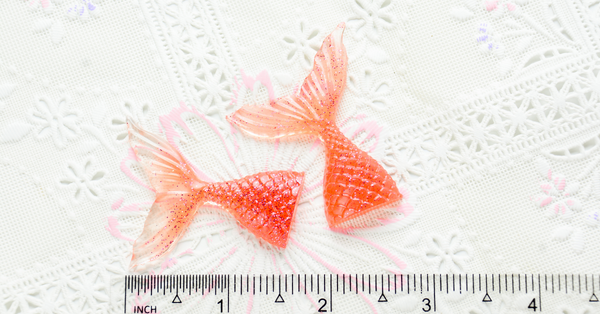
If you want to try out UV resin, Limino UV Resin is a good, affordable option. Limino also does a kit with a UV light included, which is great for beginners to try out some smaller projects.
3. Don’t add your glitter too quickly or right away
When pouring resin, with or without glitter, you should always pour slowly and steadily. This will help to avoid creating any air bubbles or uneven surfaces in your piece.
Taking it even a step further, you should wait to mix in your glitter closer to the end of your resin’s designated working time (usually between 30 and 45 minutes with epoxy resin – but check the label on your resin!). Once your resin has “gelled” slightly, then apply your glitter. Some crafters simply sprinkle the glitter on top, trusting that the glitter will sink into the resin on its own. Alternatively you can carefully stir the resin in.
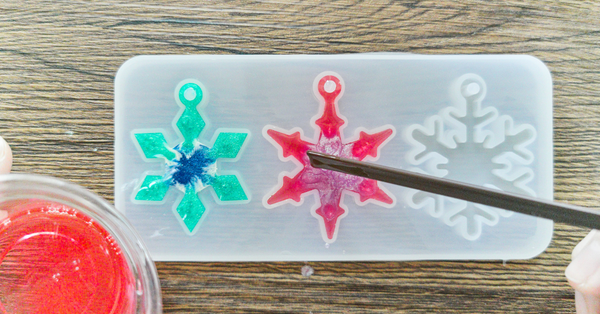
Also, sandwiching the glitter between layers of resin helps to keep it suspended throughout the piece. Begin by pouring your resin into a mold up to halfway. Once it has gelled, add glitter and let sink or stir slightly before allowing the layer to set for four-six hours. Then add another layer.
If you’re completely new to this process, then don’t worry! Experiment with different methods, materials, and techniques until you find one which suits you and your project goals best. No two resin art pieces are created equal!
4. Try eyeshadow or mica powders
Mica powders are a wonderful way to add a touch of sparkle and shine to any resin project. Mica powders are a natural mineral that are ground into a fine powder and can be used to create beautiful effects that mimic the look of gemstones or glitter.
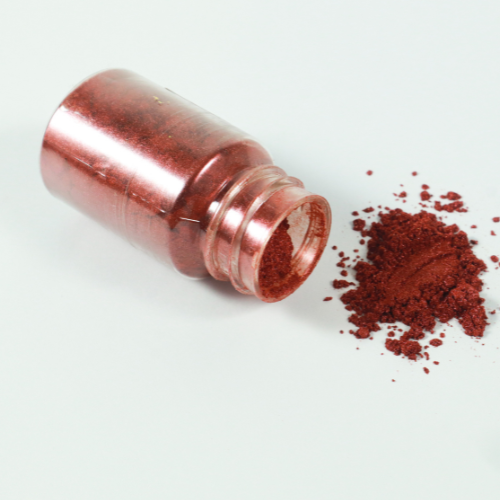
When adding mica powder to resin, it’s important to remember that the powder will settle over time. To prevent this, you’ll need to mix the powder into the resin thoroughly and keep stirring it until it’s completely combined. It’s also important to use a mold that has a smooth surface for the best results.
One of the best things about mica powders is that there are so many different colors and shades available. You can use different colors to create unique and beautiful effects. You can also mix colors together to create a unique color blend. Plus, eyeshadow works very similarly and is a great alternative if you’re on a tight budget.
What to Do if Your Glitter Sinks
Well, you gave it your best shot, doing everything right, and it still happened – your glitter sank. Luckily, you have a couple of options.
First, you can try adding a bit more glitter and dispersing it more evenly through the resin. You can also apply a layer of resin and letting it set before adding the glitter in as a second layer. Either of these solutions should help with the sinking.
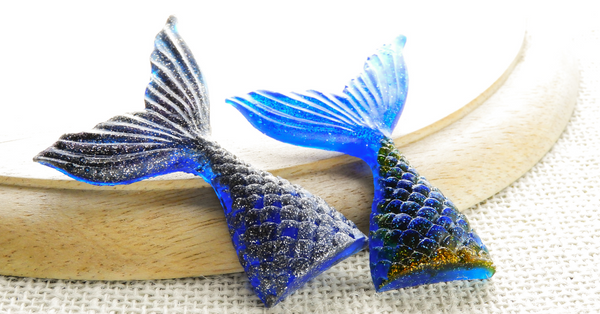
Dos and Don’ts When Adding Glitter to Resin
Now that you understand the basics behind adding glitter to your resin art, here is a quick summary of the DOS and the DON’TS:
DO Pick the right combination of glitter and resin. Polyester or “epoxy-safe” glitter are best.
DO Pour the mixture in slowly to avoid creating bubbles
DO Wait to mix the glitter in towards the end of the working time
DON’T use too chunky a glitter with a thin resin
DON’T pour the mixture too quickly
DON’T give up after your first try!
Key Takeaway
Adding glitter to resin is a great way to add some sparkle and shine to any project. But adding any old glitter to your resin piece will likely mean your project won’t turn out as you’d hoped. By following these tips, you’ll be able to avoid your glitter sinking or bleeding in your resin and create beautiful, eye-catching pieces.
Frequently Asked Questions
What glitter does not sink in resin?
Typically, a fine, high-quality polyester glitter is less likely to sink than heavy or chunky, low quality glitter. However, any size, material, or quality of glitter can end up sinking due to other circumstances.
How do you add glitter to resin?
Once you have chosen the type of glitter that you want to use, you’ll want to mix it into the resin. Start by adding a small amount of glitter to the resin and mix it until it is evenly dispersed. You may need to add more glitter depending on how much sparkle you want in your project.
Once you have added the desired amount of glitter, it’s time to pour the resin into your project. Make sure that the glitter is evenly distributed throughout the resin. Once the resin is poured, let it sit for a few hours or until it has fully cured.
Can I use any glitter with UV resin?
When it comes to adding glitter to your epoxy resin project, there are two things you need to consider: the size and the material of the glitter. The size of the glitter is important because if it is too large, it may not fully incorporate into the resin and could cause an uneven finish. If the glitter is too small, it may not be visible.
The material of the glitter is important because some glitters are not compatible with epoxy resin. Glitters made from plastic or foam should not be used because they will not adhere to the resin. Glitters made from paper or metal are safe to use as long as they are small enough to incorporate into the resin. Polyester glitter is best for use in resin, or look for a glitter that is labelled “epoxy-safe” or “resin-safe”.
What should you not put in resin?
Resin is a great medium to work with for a variety of creative projects and applications, from jewelry to sculptures and figurines. But while it’s easy to be tempted to throw anything and everything into a resin mix, there are certain materials that should be avoided including water, organic materials, metals, porous materials, oils, acids, and soaps.

